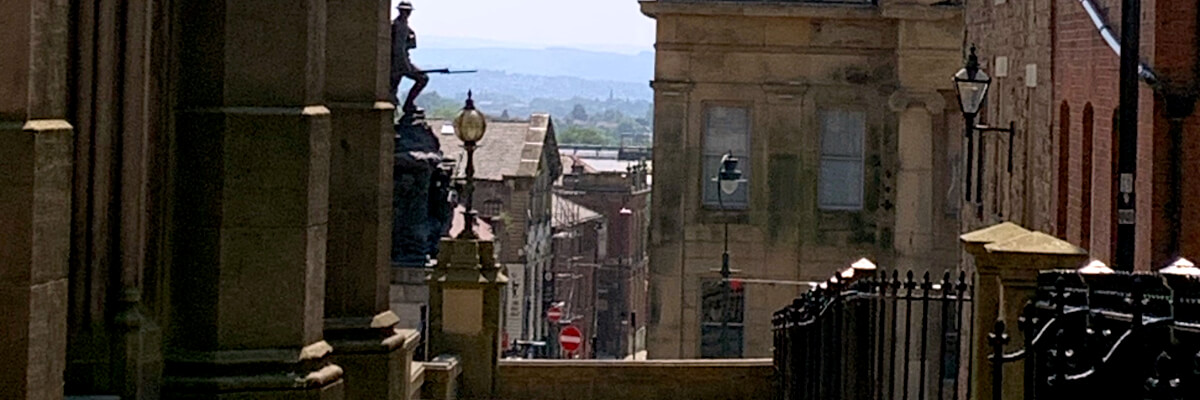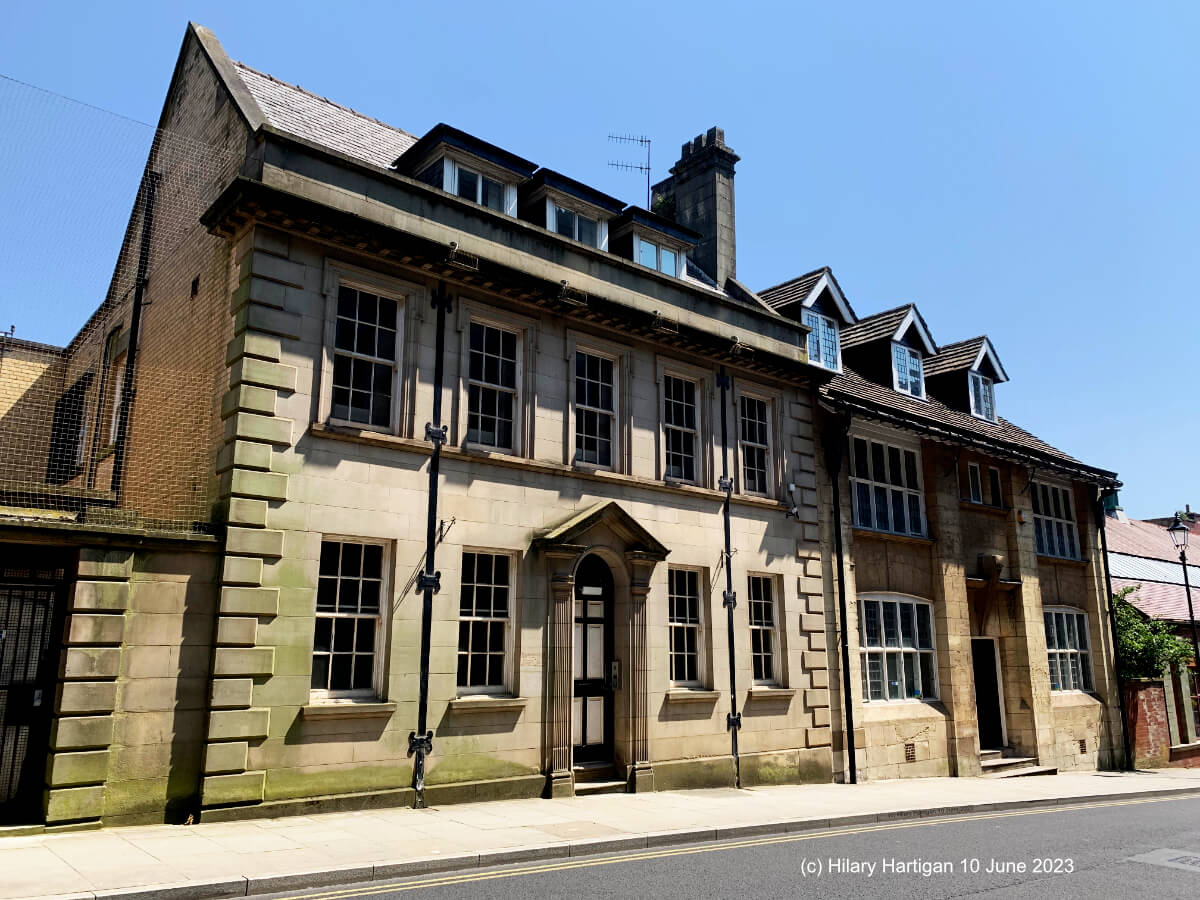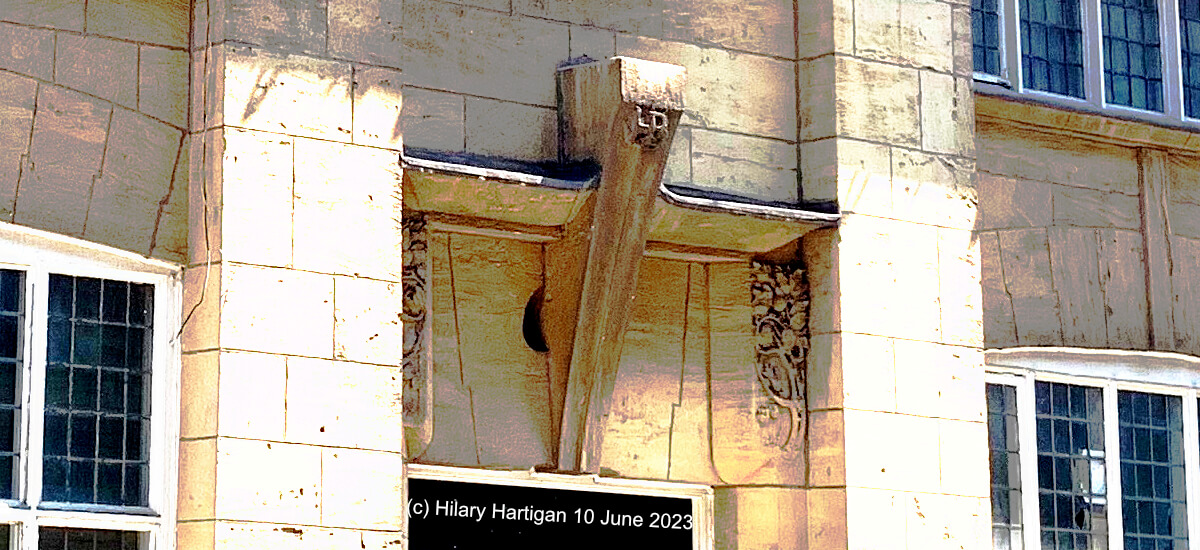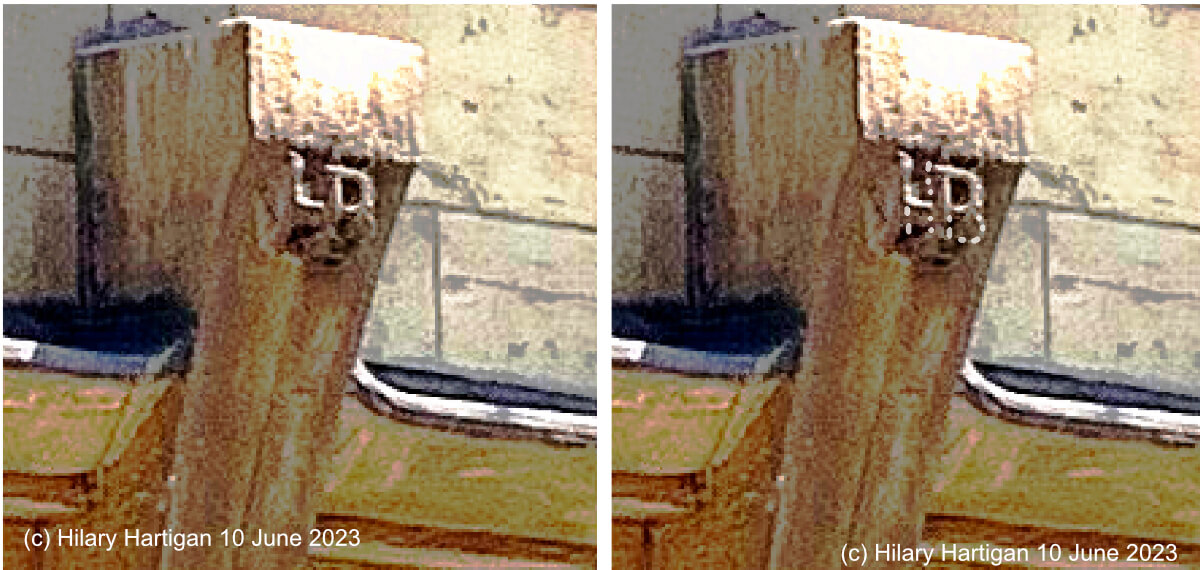Greaves Street, Oldham
As I made my way up Greaves Street to view the parish church I noticed a delightful, low-built (in comparison with the later taller buildings nearby) stone building; I made a mental note to walk back down that road later. Meanwhile I walked around the church and the town centre and indulged my passion for capturing images of the delightful nooks, crannies and steps of Oldham. Also, it seemed that from the highest point – walking around the church – there was always a view of mountains tinged blue with heat haze.

When I returned down Greaves Street everything looked different, the sun was higher in the sky, making the stone walls of this old building glow with that warm yellowness that disappears on dreary days. Time for a picture, not of one building, but of two buildings that seemed to hug each other closely as if to be stronger in their determination to live on.

This is not an in-depth investigation of the history of the buildings – that can be done later – just an account of my quest for information. A simple Google search for “Greaves Street, Oldham” led me to Flicker, to an image of the second doorway, part of what seems to be the older of the two buildings, and which featured a very unusual and striking keystone above the door. The caption described this feature as part of ‘Solicitor’s Offices by Edgar Wood in 1901’.” (2) Fortunately, I had taken a second photograph showing the doorway more clearly:

With a little processing to reduce the effect of shadows, we can see more detail, including what appears to be the initials “LD” on the keystone.

An ‘Edgar Wood Society’ (3) was formed in 2011 to ‘promote the works of Edgar Wood’; This seemed to be the ideal place to look for evidence of an Edgar Wood connection, but I found no mention of this building on Greaves Street. The building is listed on several other websites but without evidential links.
A search for “buildings on Greaves Street, Oldham” found more information. The website of ‘Manchester Victorian Architects’ (4) notes a ‘Solicitors Office, Greaves Street, Oldham’ and shows an architectural drawing of the property, confirming it to be the building that I photographed.
The article also explains why I thought that the building looked, in some respects, older than suggested by the 1901 date and why it looked slightly out of context with its yellow tinge to the stone work: ‘Unusually for this part of Lancashire it was built in Cotswold Limestone ashlar, chosen for its extraordinary pitted and fissured surface texture.’ (5) The stone façade is for show, the rest of the building was built with red brick.
And the initials? ‘Manchester Victorian Architects’ states that the building was completed in 1902 for Hesketh Booth, who was the Town Clerk of Oldham, and that his initials, ‘HB’ are ‘above the door case’.
Modern technology comes to the rescue again. My photographs were taken with my phone, not with a camera that might have captured more detail. When the image is enlarged it is possible to see that the D was quite probably a B (the beginning of the lower curve can be discerned), and that L could have been H, with plenty of room, on what now looks like a projecting oblong ‘shield’, to accommodate the lower half of both letters.

The greater part of the mystery has been solved. Hesketh Booth, Town Clerk of Oldham, commissioned the build which was only a few steps away from the old Town Hall. In 1901 Edgar Wood was at the height of his career, incorporating Arts and Crafts and Art Nouveau elements in his architectural designs where desirable.
Edgar Wood was the son of a cotton mill owner and his very strict father wanted him to become part of the business, but Edgar was an artist and had quite different ideas about his own future. In a compromise, Edgar’s father allowed him to train as an architect.
Edgar Wood qualified and worked mainly from his office in Middleton, he usually had a staff of one, and was happy to take on small projects, such as this commercial building for Hesketh Booth, the design and build of which he could control personally. He always dressed flamboyantly, instantly recognisable by his black cloak with red silk lining, his top hat and his silver cane. The garb of a successful artist, maybe? Perhaps. Architects could not advertise, but there was no rule, said Edgar, against an architect being recognisable in the street! (6)
For more information about Oldham, and to find out more about the Oldham & District FHS monthly meetings, usually held at Oldham Gallery, please visit the ‘Oldham Branch’ section of our website at https://mlfhs.uk/oldham/events
Hilary Hartigan
-
The July 2023 meeting of the Oldham & District FHS (a branch of MLFHS) was due to begin at Oldham Gallery at 2.00pm that day. For future meetings please see https://mlfhs.uk/oldham/events .
-
No link posted because part of the Flickr page appeared to have been ‘hijacked’ and led directly to a scam advertisement. If you choose to look at the image, please do not click on any links.
-
https://edgarwoodsociety.org includes biography and selected buildings
-
https://manchestervictorianarchitects.org.uk/buildings/solicitors-office-greaves-street-oldham , sourced from British Architect, 11 May to 5 July 1901 page 328 and illustration.
-
ibid
- https://manchesterhistory.net/edgarwood/bio.html for more information
- Hits: 1716